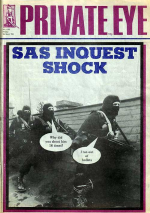This is all really interesting. Surprising to see just how large of a microscope police are under.
Is this level of understanding of the use of force standard across the police departments?
Ideally they refer to their training and what they observed and felt. Then a different person explains how and why they are trained a way. That’s why it’s important in their training I don’t seed words like “suppression”- they explain what they did and what they were looking for. Someone else explains WHY it was an acceptable action consistent with training. Kinda.
Anecdotally and dated, I have assisted officers and investigations with some of this stuff conceptually- like a particular independent agency demanding post shooting for officers to “guess” how many times they shot- it’s an unproductive exercise. I train officers to search and press the trigger while evaluating the threats behaviour. My trigger runs until I see the change in behaviour.
So when they testify or give statements- their observation starts with their threat and evaluation- the mechanism to change behaviour (in this case the trigger)- and for them to identify what changed that alerted them that they were no longer under the threat they initially faced,
It could be a snapped shot scares the bad guy and he drops the gun. That’s the change I saw so I didn’t shoot again.
Or I shot the gun in their hands because I was fixated on it. And they dropped it and that’s the change I saw so I didn’t shoot again.
Or I slowed my breathing, shot a porthole through my windshield to be able to return fire effectively on the suspect. When they observed my actions they dropped their weapon- so I didn’t shoot again.
Or when my finger touched my trigger the suspect ditched their weapon and so I knew I didn’t have to shoot.
The observation is more important than the amount of times it’s shot, the number of rounds is interesting- but not necessarily important. The reason I start shooting, why I’m shooting, and the reason I stop is.
Whether that’s because I don’t want them popping up, moving to a point of advantage, or a few other outlier odds and ends- that’s for me to explain why it was reasonable and neccessary- even If I don’t use tidy words like “suppression” etc
So for the average front end police officer- if you imagine a book, the title of the chapter could be pinning or suppression- but the chapter title isn’t really that important,
The contents and ideas in the chapter is the real important stuff- that’s what we D like to hear get articulated. Because it’s the meat of the concept. The “why” rather than umbrella term it may fall under
Because beyond the practicality of fighting, is the idea sharing/ explaining of the court room. So words, even in passing matter there.


